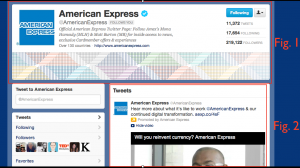
There are a few “top ten” lists out there of what to do in order to provide great customer service, and they all kind of read the same: listen, make customers feel important, apologize, say “yes” a lot, identify needs, et cetera.
As Jerry Seinfeld would say, “yada, yada, yada.” Of course these are all important components, but there’s something missing. Something big, in my opinion, that’s seldom discussed, and worse: seldom practiced.
In my role as Social Media Manager for Sears/Kmart electronics, we handled a lot – a LOT – of customer service issues, stemming from a few things (e.g. e-commerce or in-store experiences, missed installation appointments). Through this, I learned that – assuming the processes are in place – issues can be resolved, but just how they get resolved are crucial to keeping your customers happy and coming back.
I recently experienced a relatively minor issue with a major airline. The issue eventually got resolved, but not before I was made to feel like a complete idiot by one of the airline’s customer service reps. So the issue became a major one, personally, for me, and made me question whether I’d continue to use the airline. (It also inspired me to write this blog post.)
This drives me to my key point: it’s important for brands to understand why customers are complaining, but it’s even MORE important to express empathy and understanding. Thank customers for bringing issues to your attention. Understand and acknowledge just why a customer may be upset about an issue. If they’re made to feel like their complaint is strange, or out of left field, then they won’t be happy.
Don’t get me wrong: it’s still important that their underlying complaints are resolved in a sufficient, timely manner. However, a little bit of empathy and understanding will get the customer service process off on the right foot. The more your customers feel like their needs are understood, the easier – and cheaper – it will ultimately be to resolve their issues.
What do you think is the most important part of good customer service?
 From day one, the3six5 has really been the gift that’s kept on giving. Not only is it a blast to run, but it exposes me to all sorts of fantastic people that are much smarter than me.
From day one, the3six5 has really been the gift that’s kept on giving. Not only is it a blast to run, but it exposes me to all sorts of fantastic people that are much smarter than me.
